dihydroferulic acid
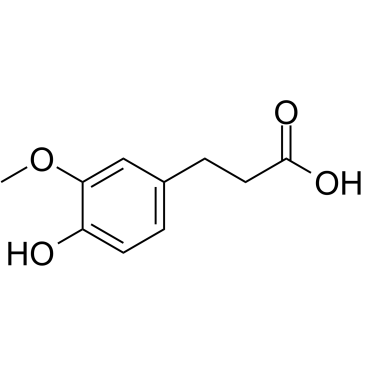
dihydroferulic acid structure
|
Common Name | dihydroferulic acid | ||
|---|---|---|---|---|
| CAS Number | 1135-23-5 | Molecular Weight | 196.200 | |
| Density | 1.3±0.1 g/cm3 | Boiling Point | 376.5±27.0 °C at 760 mmHg | |
| Molecular Formula | C10H12O4 | Melting Point | 87-93 °C | |
| MSDS | Chinese USA | Flash Point | 151.1±17.2 °C | |
| Symbol |

GHS07 |
Signal Word | Warning | |
Use of dihydroferulic acidDihydroferulic acid (Hydroferulic acid) is one of the main metabolites of curcumin and antioxidant/radical-scavenging properties with an IC50 value of 19.5 μM. Dihydroferulic acid is a metabolite of human gut microflora as well as a precursor of vanillic acid[1][2]. |
| Name | 3-(4-hydroxy-3-methoxyphenyl)propionic acid |
|---|---|
| Synonym | More Synonyms |
| Description | Dihydroferulic acid (Hydroferulic acid) is one of the main metabolites of curcumin and antioxidant/radical-scavenging properties with an IC50 value of 19.5 μM. Dihydroferulic acid is a metabolite of human gut microflora as well as a precursor of vanillic acid[1][2]. |
|---|---|
| Related Catalog | |
| In Vitro | Uptake of hydroxycinnamic acids by control, organic anion transporter 1 (OAT1), OAT2, OAT3, and OAT4 over expressing 293H cells. In 293H control cells, there was significant uptake of Dihydroferulic acid. The uptake of Dihydroferulic acid is also enhanced ~2-fold in the OAT1-expressing cells[3]. |
| In Vivo | Assessing the influence of an 11 weeks intervention with a resistant starch-enriched whole grain diet (HI-RS-WG, 25% RS) compared to a WG control diet (LOW-RS-WG, 6.9% RS) on serum profile of polyphenols (PPs) in 20 Zucker Diabetic Fatty rats. Five PPs were identified and quantified in serum samples of rats belonging to both intervention groups. HI-RS-WG rats had 2.6 folds higher serum concentrations of total PPs than LOW-RS-WG rats. An explorative data reduction approach, based on the Principal Component Analysis identified two principal components related to the gut microbiota fermentation and food intake, respectively. Results showed that the abundance of hippuric acid and Dihydroferulic acid in HI-RS-WG rats was explained by the stronger gut microbiota fermentation in those rats than in LOW-RS-WG rats[4]. |
| References |
| Density | 1.3±0.1 g/cm3 |
|---|---|
| Boiling Point | 376.5±27.0 °C at 760 mmHg |
| Melting Point | 87-93 °C |
| Molecular Formula | C10H12O4 |
| Molecular Weight | 196.200 |
| Flash Point | 151.1±17.2 °C |
| Exact Mass | 196.073563 |
| PSA | 66.76000 |
| LogP | 0.81 |
| Vapour Pressure | 0.0±0.9 mmHg at 25°C |
| Index of Refraction | 1.562 |
| Symbol |

GHS07 |
|---|---|
| Signal Word | Warning |
| Hazard Statements | H302-H315-H319-H335 |
| Precautionary Statements | P261-P305 + P351 + P338 |
| Personal Protective Equipment | dust mask type N95 (US);Eyeshields;Gloves |
| Hazard Codes | Xn |
| Risk Phrases | R36/37/38 |
| Safety Phrases | S26-S36 |
| RIDADR | NONH for all modes of transport |
| WGK Germany | 2 |
| HS Code | 2918990090 |
| Precursor 7 | |
|---|---|
| DownStream 10 | |
| HS Code | 2918990090 |
|---|---|
| Summary | 2918990090. other carboxylic acids with additional oxygen function and their anhydrides, halides, peroxides and peroxyacids; their halogenated, sulphonated, nitrated or nitrosated derivatives. VAT:17.0%. Tax rebate rate:13.0%. . MFN tariff:6.5%. General tariff:30.0% |
|
Development of a targeted method for twenty-three metabolites related to polyphenol gut microbial metabolism in biological samples, using SPE and UHPLC-ESI-MS/MS.
Talanta 128 , 221-30, (2014) An increasing number of studies have concerned the profiling of polyphenol microbial metabolites, especially in urine or plasma, but only a few have regarded their accurate quantification. This study ... |
|
|
Fate of microbial metabolites of dietary polyphenols in rats: is the brain their target destination?
ACS Chem. Neurosci. 6 , 1341-52, (2015) Different polyphenol compounds are ingested when consuming a serving of fruits rich in polyphenols, spanning from one-phenol hydroxybenzoic acid to more complex polymeric compounds. Only a minor quant... |
|
|
Chronic administration of a microencapsulated probiotic enhances the bioavailability of orange juice flavanones in humans.
Free Radic. Biol. Med. 84 , 206-14, (2015) Orange juice (OJ) flavanones are bioactive polyphenols that are absorbed principally in the large intestine. Ingestion of probiotics has been associated with favorable changes in the colonic microflor... |
| Benzenepropanoic acid, 4-hydroxy-3-methoxy- |
| EINECS 214-489-5 |
| 3-(4-Hydroxy-3-methoxyphenyl)propanoic acid |
| dihydroferulic acid |
| 3-(4-Hydroxy-3-Methoxyphenyl)propionic Acid |
| MFCD00016558 |
 CAS#:1135-24-6
CAS#:1135-24-6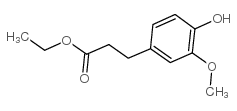 CAS#:61292-90-8
CAS#:61292-90-8![3-[4-(Benzyloxy)-3-methoxyphenyl]propanoic acid Structure](https://www.chemsrc.com/caspic/115/30034-49-2.png) CAS#:30034-49-2
CAS#:30034-49-2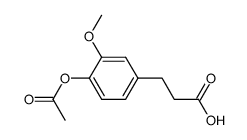 CAS#:55417-34-0
CAS#:55417-34-0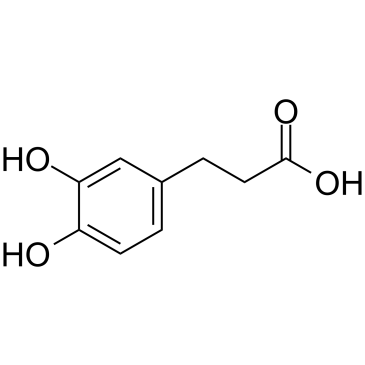 CAS#:1078-61-1
CAS#:1078-61-1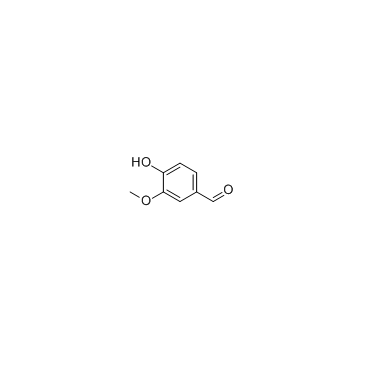 CAS#:121-33-5
CAS#:121-33-5![Propanedioic acid,2-[(4-hydroxy-3-methoxyphenyl)methylene]-, 1,3-diethyl ester Structure](https://www.chemsrc.com/caspic/019/24331-83-7.png) CAS#:24331-83-7
CAS#:24331-83-7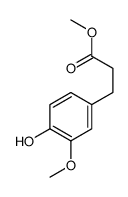 CAS#:56024-44-3
CAS#:56024-44-3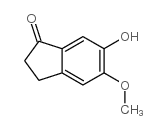 CAS#:90843-62-2
CAS#:90843-62-2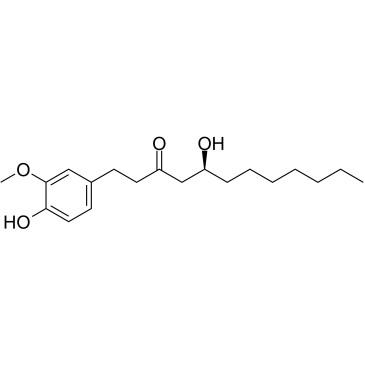 CAS#:23513-08-8
CAS#:23513-08-8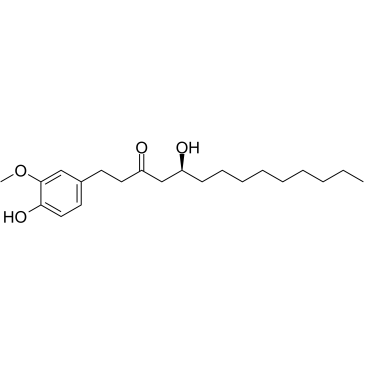 CAS#:23513-15-7
CAS#:23513-15-7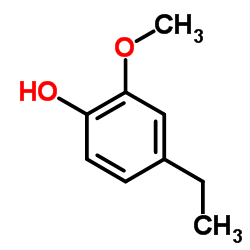 CAS#:2785-89-9
CAS#:2785-89-9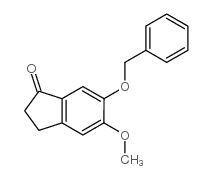 CAS#:3199-70-0
CAS#:3199-70-0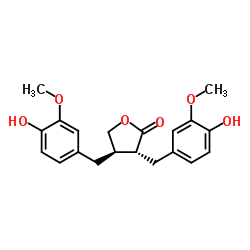 CAS#:580-72-3
CAS#:580-72-3